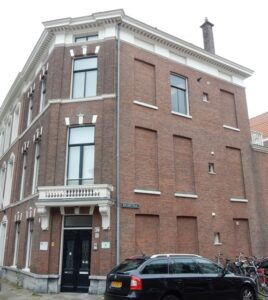Taxation has always been a key tool for governments to generate revenue and shape social behavior. Throughout history, various unique and often peculiar taxes have been levied. One such example is the England Window Tax, a tax that had an intriguing impact on both architecture and social norms in 18th and 19th-century England.
The Genesis of England Window Tax

The England Window Tax was introduced in 1696 during the reign of King William III. At its core, the tax was simple: homeowners were taxed based on the number of windows in their properties. The more windows a property had, the higher the tax imposed. This tax was a response to the pressing need for revenue following England’s involvement in various wars and conflicts during the late 17th century.
The Unintended Consequences

While the England Window Tax may have seemed like a straightforward revenue-generating measure, its implementation led to a series of unintended consequences.
Architectural Changes: To evade the tax, homeowners began bricking up windows or building houses with fewer windows. This led to a shift in architectural styles, with many houses being designed with fewer windows, which affected the aesthetic appeal of buildings.
Diminished Natural Light: With reduced access to natural light due to bricked-up windows, interiors became darker and less pleasant to live in. This forced residents to rely more on artificial lighting, which had its own costs and implications for energy consumption.
Social Equity Issues: The Window Tax was regressive in nature, as it disproportionately burdened the less affluent, who often lived in smaller, more modest homes with fewer windows. This raised concerns about social equity and fairness in taxation.
The Tax’s Impact on Society

The England Window Tax was not just about revenue collection; it also had a profound influence on society.
Class Distinction: The tax reinforced class distinctions. Wealthier individuals could afford to pay the tax and enjoy well-lit homes, while the less fortunate were left with darker, gloomier living spaces.
Health Implications: Diminished access to natural light had health implications. Lack of sunlight was associated with conditions such as rickets, and the gloomy interiors may have contributed to mental health issues for some.
Architectural Legacy: The architectural legacy of the Window Tax is still visible today. Many historic buildings in England bear the scars of bricked-up windows, serving as a tangible reminder of this unique fiscal policy.
The Demise of the Window Tax

The England Window Tax was met with widespread criticism and opposition over the years. By the mid-19th century, public sentiment had turned against it, and it was finally repealed in 1851. The tax had outlived its usefulness and was seen as an unfair burden on the population.
Conclusion

The England Window Tax, though an unusual historical fiscal policy, left a lasting imprint on the architecture and social fabric of 18th and 19th-century England. Its unintended consequences, from altered architectural styles to social inequities, serve as a reminder of the far-reaching impact that seemingly innocuous tax policies can have. While the Window Tax is now a relic of the past, it serves as a cautionary tale for policymakers, highlighting the importance of considering the broader implications of taxation beyond just revenue generation.



